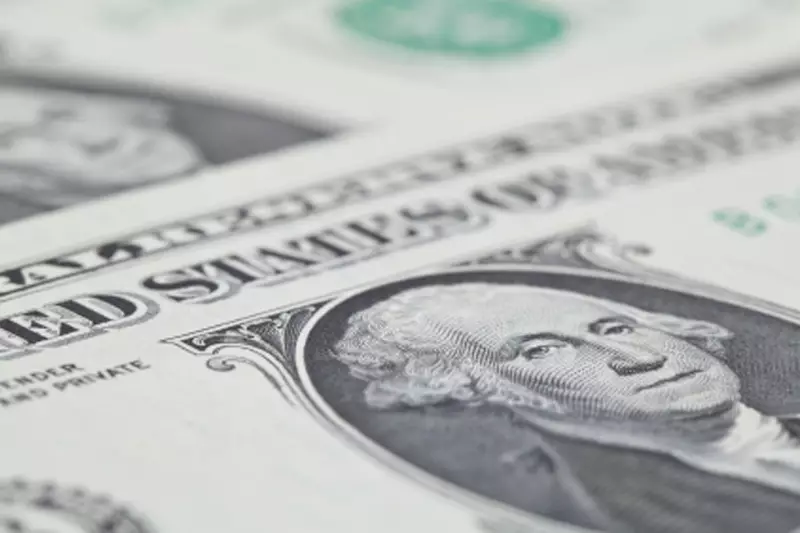This week, the U.S. dollar has exhibited remarkable resilience amid a backdrop of intense political shifts and monetary policy adjustments. After a turbulent week, where the currency experienced both gains and losses, the Dollar Index, which measures the dollar against six major currencies, has managed to stabilize around 104.372 as of 04:30 ET (09:30 GMT). Although it’s only poised for a marginal weekly gain of 0.2%, the dollar had shown explosive growth earlier in the week, primarily driven by the implications of Donald Trump’s recent election victory.
The Dollar Index surged by 1.5% on Wednesday, marking its most substantial single-day increase since September 2022, as traders responded to the prospect of a Trump administration. The anticipated policies related to tariffs and immigration inferred a slower pace for Federal Reserve rate cuts. However, this initial upswing faced some correction following the Fed’s decision to lower interest rates by 25 basis points on Thursday, which hinted at a primary objective of maintaining inflation around its 2% target.
Bank analysts, including those from ING, have noted that the market’s response is indicative of a necessary positioning adjustment rather than a reassessment of the consequences of Trump’s presidency on global markets. Prior to Election Day, traders broadly anticipated a Trump victory, and the dollar’s spike was a reaction to this confirmation rather than a complete reinvention of market sentiment. The volatility observed also reflects the ongoing tug-of-war between political uncertainty and macroeconomic fundamentals as we approach significant economic reports, including the U.S. consumer price index scheduled for next week.
Attention has begun to shift back to macroeconomic discussions, suggesting that the immediate impact of political events may be subsiding, leaving traders to ponder how sustainable these dollar gains can be in the near term. Key economic data releases in the upcoming weeks may serve to solidify or challenge this nascent stability.
Conversely, the euro has faced a challenging week as the political climate within Germany has further strained the common currency. The EUR/USD pair dropped 0.2% to 1.0785, anticipating a weekly loss close to 0.5%. The political turmoil, triggered by German Chancellor Olaf Scholz’s decision to dismiss his finance minister, not only sets the stage for a possible snap election but also raises questions regarding future economic stability in Europe’s largest economy, especially in light of potential trade conflicts with the U.S.
Market analysts have noted that recent fluctuations in the euro appear to be more a product of positioning adjustments rather than a fundamental reconsideration of Trump’s policies, which could have adverse effects on the eurozone. As expectations of trade tensions heighten, so does uncertainty surrounding the euro’s performance, posing risks for investors navigating this complex landscape.
The GBP/USD exchange rate also faced headwinds this week. The pound dipped 0.2% to 1.2961, moving further away from the crucial 1.30 threshold. The Bank of England’s announcement of an additional interest rate cut has instigated fears of sluggish economic growth and prolonged inflation recovery. While the BoE has eased rates for the second time this year, signals suggesting that upcoming budgetary measures may elongate the timeline for returning inflation to target have stoked investor wariness.
With market expectations slowly aligning with a cautious outlook, the probability of further rate cuts in December appears dim. However, analysts maintain that the BoE’s broader easing framework may still proceed, likely leading to quicker cuts in early spring compared to what the market currently accounts for.
On the other side of the Pacific, the Chinese yuan showed slight weakness against the dollar, climbing 0.2% to 7.1555. The focus on the National People’s Congress (NPC) meeting hints at a potential approval for vast fiscal expenditures, likely upwards of 10 trillion yuan ($1.6 trillion), aimed at stimulating the economy in the coming years. As Beijing has recently announced a series of stimulus measures, market participants are keen to assess how these plans will unfold.
Furthermore, the Japanese yen witnessed a modest increase, influenced by recent warnings from Japanese officials regarding currency intervention. Meanwhile, the Australian dollar, despite an overall loss of 0.5% this week to 0.6646, is tracking towards an impressive weekly gain exceeding 1%, reflecting its underlying volatility.
As foreign exchange markets continue to dance with volatility linked to political changes and central bank decisions, the U.S. dollar’s ability to steady itself while navigating these tumultuous waters remains noteworthy. The interplay of local economic indicators, global political developments, and investor sentiment will significantly shape the dollar’s trajectory in the approaching weeks. Traders will need to remain vigilant and adjust their strategies as new data emerges, aiming to decode the ongoing narrative within this multifaceted landscape.

